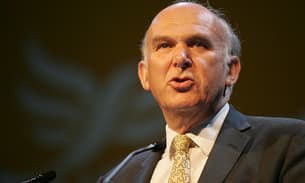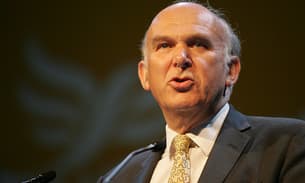
Billions of euros lost to fraud and irregularities
Every autumn, the European Court of Auditors in Luxembourg releases a weighty report assessing how Brussels spends its money. This year, like virtually every year before it, the independent body’s verdict on structural funds was stark: “The payments . . . were affected by material error”.
It is an unhappy tradition for the European Commission, even more so during this period of fiscal austerity across the continent, and in the opening stages of a debate on the size of the European Union’s budget for the seven years after 2013.
Structural funds have always stood out as the most problematic spending area in the EU budget. More than a third of payments to projects audited were affected by error in 2009, according to the latest auditors’ report. Those errors range from minor mistakes, caused by the extraordinary complexity of disbursing money to 2m projects in 27 countries, to more serious cases involving rigged contracts and out-and-out fraud.
All told, €700m of money disbursed as part of the structural funds programme should not have been paid out, the auditors said this year. In 2009 alone, suspected fraud in structural fund expenditure affected the EU budget to the tune of €109m.
But if the problem is well-documented, the system that is meant to prevent fraud and, more importantly, punish any wrongdoing, has repeatedly proven ineffective. A joint investigation by the Financial Times and the non-profit Bureau of Investigative Journalism into EU structural funds raises big questions over whether the EU’s oversight of the €347bn flagship regional development programme is up to the job and whether taxpayers can be sure their funds are well spent.
The Commission says it is working to simplify the system, and finding a balance between the administrative costs of control and the risk of error. But, for now, structural fund spending is overseen by a complex, unco-ordinated web of checks and balances at national, regional and Commission level. Despite the multiple audits, critics say these systems are ineffective and impose a costly burden.
Suspected fraud cases are referred to Olaf, the EU’s anti-fraud body. Set up in 1999 after a string of corruption scandals caused the mass resignation of the European Commission, Olaf has faced near-incessant criticism since its inception, and is seen by some as the Achilles heel of the EU’s fight against fraud.
“As it stands today, Olaf has no value,” says Marta Andreasen, an MEP, who in her previous post as the Commission’s chief accountant blew the whistle on flaws in its accounting system and now sits on the European Parliament’s budget oversight committee.
With fewer than 20 investigators dedicated to structural funds, Olaf, which operates on a budget of about €60m, has to cherry pick cases. “We pick out those investigations we think will have the biggest impact,” says Nick Illett, Olaf’s acting director-general. “In order to open an investigation, we have to have serious grounds for a suspicion that an offence has been committed.”
But even cases that are investigated can take years to close. More than 66 per cent, or 329 of Olaf’s current 496 investigations, have been in progress for longer than nine months, and 148 more than two years, according to figures from Olaf.
“As a committee, it is not so much the length of investigations that worries us. There are also considerations such as lack of co-operation by the persons under investigation, and, sometimes, not such enthusiastic co-operation from members states’ judicial and legal authorities,” says Rosalind Wright, chairman of the UK’s fraud advisory panel and a member of the Olaf supervisory committee. “Sometimes this means that investigators leave one case in the air, as it were, while they are diverted on to another, more pressing one.”
Related article: Lack of transparency hides details of funding
Algirdas Semeta, the EU commissioner responsible for the fight against fraud, insists “the situation has improved over the past few years”. He points to a steady trend in recent years of declining error-rates found by the European Court of Auditors as evidence of progress, though admits more must be done.
But some are more sceptical about the progress, arguing it is too early to pronounce a trend: “One year of data are too little – the level of payments is still low,” says Kersti Kaljulaid, who oversaw the audit of structural funds for the European Court of Auditors.
A report by Ingeborg Grässle, an outspoken member of the European Parliament’s budget control committee, also points to what she dubbed a worryingly low conviction rate of cases brought forward by Olaf. “Even more incomprehensible is that a significant percentage of the proceedings are not followed up allegedly because of lack of public interest, “ she said.
From 242 cases closed with judicial follow-up in 2006, 2007 and until December 2 2008, about 15 per cent of cases had received at least one court sentence, according to data provided by Olaf this year. Olaf did not provide more recent data in response to FT requests.
Part of the problem lies with the oversight system’s reliance on the goodwill of member states and their local authorities. “In the case of structural funds, we rely quite heavily on irregularity reports,” admits Mr Illet.
Olaf does not have the power to prosecute its own cases and relies on local authorities to follow up its investigations. Member states have to report “irregularities” to Olaf and the Commission. These do not just relate to suspected fraud, but also numerous cases where structural funds are otherwise wrongly spent. In 2009, nearly 5,000 such errors were reported, affecting €1.22bn of structural funds.
But critics point out that many countries do a less than stellar job complying with this requirement. The Commission, alongside Olaf, publishes statistics on the errors reported by member states, only to effectively rubbish them by underlining that higher irregularity rates or suspected fraud rates may only mean the authorities are better at reporting them, or have better anti-fraud systems.
Related article: Billions of euros lost to fraud and irregularities
The Commission routinely blocks payments to regional development programmes when it has doubts over their integrity, something it was loath to do in the past. But the European Parliament is pushing for more to be done. Several members of the budgetary control committee have demanded that money should stop flowing to the most problematic regions.
Member states just “don’t do what they should”, says Bart Staes, vice-chair of the budget control committee. “Their management and control systems are not in order. The Commission should tell them, because member states undermine the implementation of the EU budget.”
Even when fraud or errors that affect the budget are found, recouping the money can take years. If errors are detected, the Commission makes a deduction from its next payment to the member state. During the last two funding phases, €8.4bn of such deductions have been made, including €2.5bn in Spain alone.
But just how much money countries can claw back from beneficiaries is unclear. “Member states to not always report the results of their recovery operations,” a dry passage in the EU’s latest annual report says.
“Only a fraction of falsely paid out EU subsidies are recouped by Brussels,“ says Ms Grassle, who is calling for an automatic recouping mechanism. “Many member states find it cheaper to pay a little penalty to the Commission than to set up an effective system for repayment of EU subsidies.”




